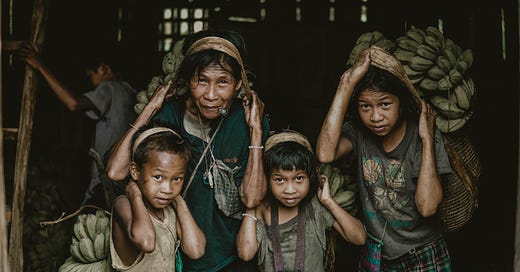A brief history of Filipino farmers
Present day Philippines was named after Spain’s King Philip II after they colonized the land in 1521. Spain was instrumental in uniting the tribal groups among the hundreds of islands. Tribes acted in their own interest and sometimes that meant bloodshed.
Christian influence
Christian missionaries helped bring the Filipino economy up. They taught them better farming practices and taught them to save food for future shortages. They introduced cows, horses, tomatoes, cacau, other crops, and showed them how to use the plow.
Perspectives on land
No one claimed land as personal property before the Spain colonized. The community was responsible for taking care of the land which was considered sacred to them. However, shortly after land ownership was introduced, the small landowning elite separated from the majority poor Filipinos. Hacienda owners were typically the elite families who enjoyed exclusive rights to manage the land.
Farmers
There were several classes of farm workers in the Philippines. The inquilinos remained on the land they may have sold earlier. They were the equivalent of commercial middle men since they hired and paid farm hands to work the land. The inquilinos usually weren’t expected to pay their landowners for the first four years if they planned on staying for over 9 years.
The harvest belonged to inquilinos and they were the ones who became rich. In a nutshell, the international trade monopolists were rich, the farming middle men were well off, and the common farmers stayed poor.
 A family arriving to the place where they sell bananas they have collected from the mountains. They sell these for P20.00 ($0.40) per bundle. Photo by Zeyn Afuang
A family arriving to the place where they sell bananas they have collected from the mountains. They sell these for P20.00 ($0.40) per bundle. Photo by Zeyn Afuang
The United States bought the Philippines from Spain in 1898 with the intention to prepare them for independence and to utilize their raw materials. This boosted the Filipino economy and the hacienda owners enjoyed the revenue increases. This was a result of the favorable trade arrangements with the USA in the early 1900’s. However, the ordinary Filipinos did not share the increase in revenue.
No one came to industrialize the Philippines from the USA because they were worried about long term profitability. The Philippines were on the path to absolute independence which would negatively effects of trade relations with the USA. The farmers stayed farmers instead of becoming industrial laborers.
Farmer’s Tianggi economy:
Ordinary Filipino farmers engaged in small scale economy known as tianggi. They engaged in this bartering system not necessarily for profit, but to get what they needed. There weren’t middle men or fixed rates and all trade was done by direct exchange. Author Jose S. Arcilla said, “No matter how strong a person was, his basketload of products could never earn him a thousand pesos.”
Pampanga:
Pampanga is located on the island of Luzon in the central Luzon plain, north of Manila. It was once the leading exporter of rice to Manila Before1880. The Philippines were commercialized as a rice exporter some 50 years before Thailand, Burma and Vietnam. Eventually the neighboring countries caught up and began supplying and exporting their own rice. Saigon in Vietnam became a rice entrepot which decreased the demand in Philippine rice production and limited it to domestic trade.


